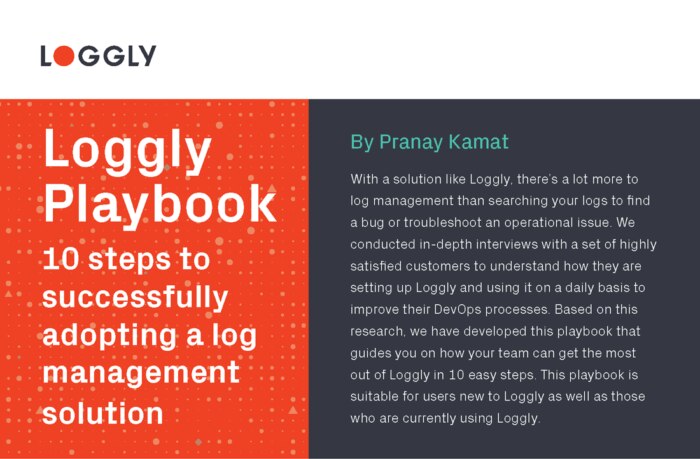A new playbook for adopting log management solutions
A lot of customers start evaluating Loggly and other log management vendors because grep isn’t cutting it anymore. (Or as one customer joked, “Because our DevOps team ran out of places to put monitoring screens. :-0”) But with a solution like Loggly, there’s a lot more to log management than searching your logs to find a bug or troubleshoot an operational issue. A lot more.
I’m someone who works very closely with developers, support reps, and ops team members at Loggly, people just like our customers who have to respond to customer issues from alerts and pages. In talking to both customers and coworkers, it became clear how much more productive people are when they have clear guidelines on how to take advantage of the powerful troubleshooting capabilities in Loggly.
My team recently conducted in-depth interviews with a set of highly satisfied customers of different sizes and from diverse industries to understand how they are setting up Loggly and using it on a daily basis to improve their DevOps processes. Based on this research, we have developed a playbook to guide you on how your team can get the most out of Loggly in 10 easy steps.
Whether you’re currently using Loggly, in the midst of a trial, or just starting to think about how log management can help your business, I recommend that you give it a read. You’ll be in a position to make better decisions about log management and potentially will prevent a lot of late-night headaches.

Have feedback about the playbook? Let me know in the comments. You can also follow @loggly and tweet about it.
The Loggly and SolarWinds trademarks, service marks, and logos are the exclusive property of SolarWinds Worldwide, LLC or its affiliates. All other trademarks are the property of their respective owners.
Pranay Kamat Pranay Kamat is Senior Product Manager at Loggly. His previous experiences include designing user interfaces, APIs, and data migration tools for Oracle and Accela. He has an MBA from The University of Texas at Austin and Master's degree in Computer Science from Cornell University.


